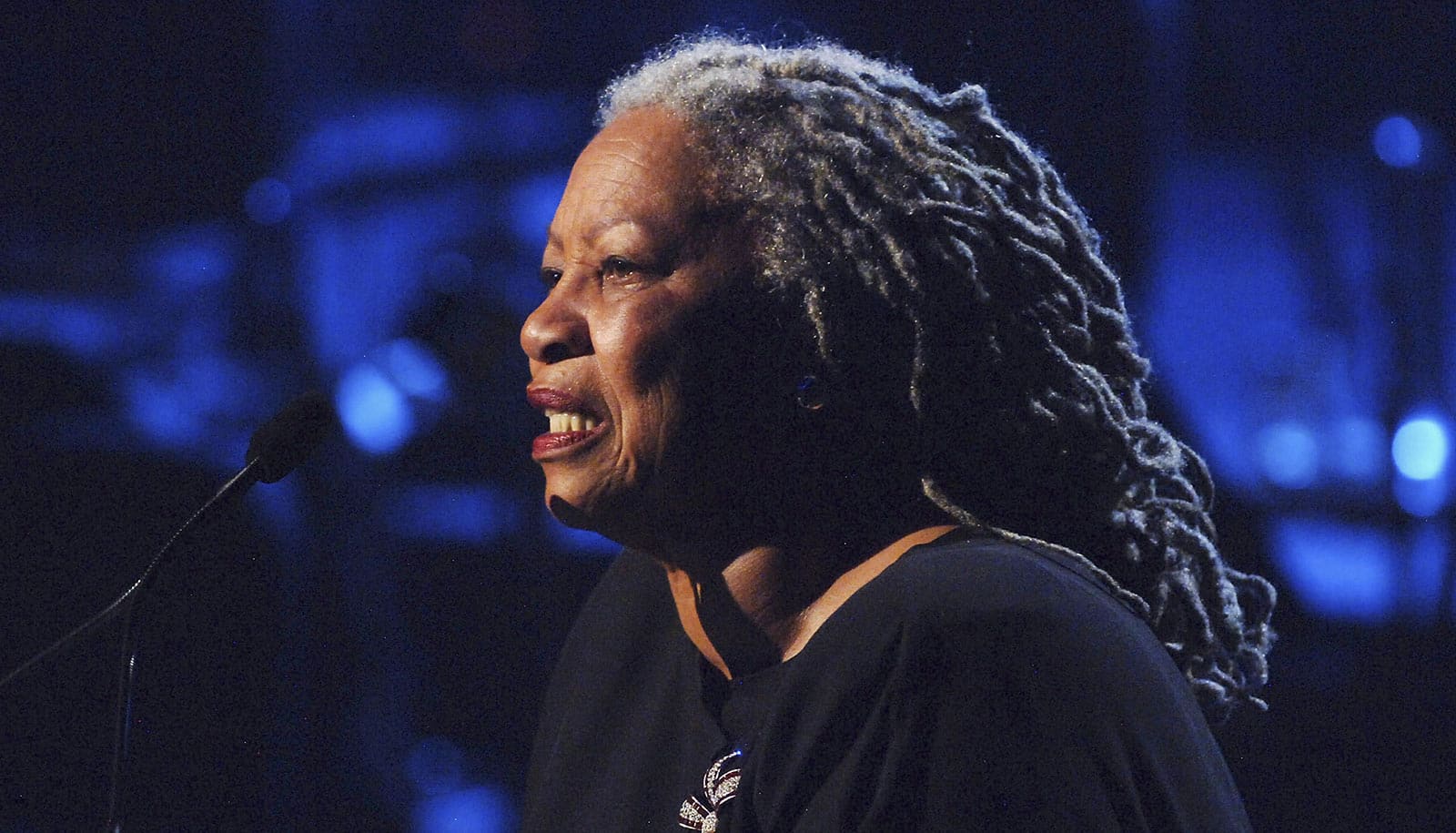A new book explores how a history of rejection shaped African American literature and activism for generations to come.
Although scholars have explored some of the historical periods that gave rise to contemporary African American writing, often overlooked are years leading up to the last century—and immediately following the 1896 Plessy v. Ferguson Supreme Court decision, which legalized segregation.
“I do believe that our tendency to group the years from 1877 to 1919, from the end of Reconstruction to the Harlem Renaissance, has prevented us from identifying the specificity of the intervening years,” writes professor Elizabeth McHenry, chair of New York University’s English department, in To Make Negro Literature: Writing, Literary Practice, and African American Authorship (Duke University Press, 2021).
In the book, McHenry focuses on these forgotten years—roughly 1896 through the first two decades of the 1900s—not because these decades marked success, but rather, because it was a period of publishing failure.
This is perhaps most clearly illustrated through the story of the writer and activist Mary Church Terrell, one of the book’s focal points, whose challenges McHenry argues helped spur the success of the African American writers that we’re familiar with today.
“Terrell wanted to pave the way for Black writers to be writing fiction as a norm and for these fictional forms to become as acceptable as journalistic forms,” McHenry explains.
“Whereas her journalism appeared in African American print sources throughout the first decade of the 20th century, her archives at the Library of Congress are full of the unpublished short stories she wrote and sought to place in the nation’s elite literary magazines,” McHenry continues in her book. “The collection also includes a dispiriting series of rejection letters from the publishers of these magazines that made clear to her that she lived in a political climate unsupportive of literary ambitions like her own.”
Yet she says these failures were “both foundational and, as much as we regret it today, also necessary.
“This whole body of work that I look at, this body of work that includes practitioners and projects and authors and authorship as a concept, is like infrastructure,” says McHenry, who previously penned Forgotten Readers: Recovering the Lost History of African American Literary Societies (Duke University Press, 2002). “It is a backbone of Negro literature, a backbone of what we now think of as African-American literature—and not in the way that I think a lot of people look at earlier time frames and say, see, ‘This was the roots of the Harlem Renaissance.’ This isn’t the roots of the Harlem Renaissance. That’s something different. This is the roots of an appreciation for literature and literary culture, and of a substantial audience for Black literature. It’s a much more broadly laid infrastructure or scaffolding for literature as we now know it.”
(Note: In the new book’s introduction, McHenry writes, “To use the word ‘Negro,’ as I deliberately do in this study, is to evoke a particular moment in which African Americans embraced the word, insisting that its first letter be capitalized as a means of both controlling its meaning and signifying the recognition and respect due to people of African descent.”).
Here, McHenry talks about the book and, specifically, how African American writing of the post-Reconstruction era had a purpose that stretched beyond the printed page:
You write that writer and publisher T. Thomas Fortune had come to believe that journalism, his profession, was “ineffective” in achieving progress for African Americans—and especially so in stemming the tide of lynching, which was widespread in the early part of the 20th century. As an alternative, he and others, including Mary Church Terrell, turned to fiction as a weapon. How did this come about?
Both Terrell and Fortune were combating the realities of fiction of the time—the broad, sweeping narratives that had been created about Black people, about Black sexuality, about Black bestiality, and about Black criminality. These narratives romanticized the antebellum South and helped to fuel the stereotypes that are familiar to us now, and their roots lie in part in the post-Reconstruction period. The false narrative that led to and made lynchings so widespread was, of course, that Black men were raping white women: the narrative of Black men’s insatiable sexual desire for white women led to what was a rampage of lynchings. These racist narratives were attractive and they were much more powerful than any facts that were communicated in the form of journalism.
And I think that what both Fortune and Terrell figured out was that the narratives had to be met with narratives—they couldn’t be met with facts; even if those facts provided overwhelming evidence, they weren’t attractive in the same way. In her public campaign, Ida B. Wells had tried to combat lynching with facts. She was outspoken and fiery and energetic, and she carefully researched her subject, using sources compiled by white people that were published in newspapers white people considered reputable. She came to realize that lynching had taken a deeper hold in this country than could be overcome by facts communicated through journalism.
So I think Terrell and Fortune’s turn to fiction had to do with trying to create equally powerful narratives of Black life, of Black community, particularly of the problems and the challenges of segregation and discrimination—of being unable to ride in railcars without feeling threatened, for instance. But in the short term, the problem was that no one would publish those narratives. What people wanted was narratives that showed Black people to be ridiculous or comical or unintelligent or violent.
How did these writers persevere?
What Terrell did was she just kept submitting her stories to publications and having them rejected, knowing that they wouldn’t be published, knowing that there was no taste for the kind of writing that she was doing. She was determined to essentially call out the discrimination where she saw it—to call out editors’ unwillingness to establish a norm of Black writers writing about themselves in fictional forms and their dogged adherence to a custom of Black people being written about in ways that ridiculed them and in ways that only reinforced their status as inferior.
One way to look at Terrell’s fictional stories is as ineffectual: they were never published and they never were read by large numbers of people.
They never had the impact that she wanted them to have, the impact that she felt they could have had. On the other hand, Terrell created an audience for her stories. She insisted that they be read by magazine editors, I think, as a way to make future failures by Black writers less likely.
Related to this is something you note in your book: Failure is an aspect of literary culture that is rarely explored. In your examination, you call setbacks among African Americans around the turn of the century a collective “‘productively occupied’ failure.” What, specifically, was productive about these failures?
What probably was the most important for my thinking about failure was the way that, in essence, all of these projects were supposed to fail because everything that Black people set out to do was supposed to fail: they weren’t even supposed to have an intellectual life. Their businesses were supposed to fail. Segregation, discrimination, lack of economic opportunity: all these things were systematically put in place so that Black people would fail. So in some ways, it seems to me that anything that they tried to essentially refute that, to refuse that failure, to say that “This is not the world we’re going to live,” becomes, in essence, a failure but also a mode of protest. It is a failure that is reaching towards something else, something that is productive. It is a failure that is reaching towards a future success, in a future time that was not yet visible.
So when I say early 20th century writers “productively occupied failure,” I am pointing to a way to reconsider their unpublished writing and other unsuccessful literary attempts as an audacious rejection and refusal of the place assigned to them as segregation was legalized. When we look at failure in this light, it becomes crucial to go back into the archives and recover some of these projects that we have labeled “failures.” Some of these were significant attempts that reveal important literary practices that we have overlooked.
You observe that African American writers of the period, notably Paul Laurence Dunbar, were told by critics to write exclusively about their own race—and to ” ‘sound’ Black while doing it.” Is there evidence that Dunbar’s 21st-century successors face these same directives—even if more subtly expressed?
One of the things I came to see more vividly in writing this book was that the literary marketplace is really a marketplace, and it responds to what readers want.
I don’t think that that’s any less true now. And so I am sure that there are readers who want what they think “Blackness” sounds like, and that they’re hungry for certain kinds of stories that are based in stereotypes rather than in reality.
But one way to think about this more usefully is to consider how much more room there is now for Black difference—for Black communities and Black people to be seen as multiple and diverse in and of themselves. And I think that Black writers have had a hand in making that possible all the way through the 20th century.
Here’s a good example. Toni Morrison, not only as a writer but also as an editor for Random House, opened up space for Black women’s stories, for Black women to be writers and to be able to write about themselves and their own experiences. James Baldwin opened up another kind of space for a different set of stories about Black people, Black identity, and Black communities. So by the time that someone like Colson Whitehead begins to write, he has the space to write a tremendous array of books. Some are works of fiction, and some are nonfiction. Some reflect his own relatively privileged New York City private school upbringing and all its complexity; others play with realism and allegory, and still others play with history in imaginative ways.
There’s so much more room now for Black writers to imagine Black lives and Black history in different ways, from different perspectives, and in different contexts. I am sure there are still Black writers that feel pressured to write in a certain way. But I also think there’s much more room than there was in the past for Black people to write about the America that they actually see.
Source: NYU



